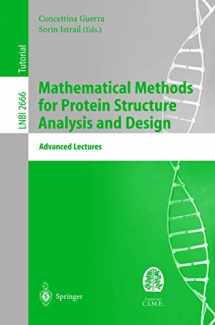
Mathematical Methods for Protein Structure Analysis and Design: Advanced Lectures (Lecture Notes in Computer Science, 2666)
Book details
Summary
Description
The papers collected in this volume reproduce contributions by leading sch- arstoaninternationalschoolandworkshopwhichwasorganizedandheldwith thegoaloftakinga snapshotofadiscipline undertumultuous growth. Indeed, the area of protein folding, docking and alignment is developing in response to needs for a mix of heterogeneous expertise spanning biology, chemistry, mathematics, computer science, and statistics, among others. Some of the problems encountered in this area are not only important for the scienti?c challenges they pose, but also for the opportunities they disclose intermsofmedicalandindustrialexploitation. Atypicalexampleiso?eredby protein-drug interaction (docking), a problem posing daunting computational problems at the crossroads of geometry, physics and chemistry, and, at the same time, a problem with unimaginable implications for the pharmacopoeia of the future. The schoolfocused on problems posed by the study of the mechanisms - hind protein folding, and explored di?erent ways of attacking these problems under objective evaluations of the methods. Together with a relatively small core of consolidated knowledge and tools, important re?ections were brought to this e?ort by studies in a multitude of directions and approaches. It is obviously impossible to predict which, if any, among these techniques will prove completely successful, but it is precisely the implicit dialectic among them that best conveys the current ?avor of the ?eld. Such unique diversity and richness inspired the format of the meeting, and also explains the slight departure of the present volume from the typical format in this series: the exposition of the current sediment is complemented here by a selection of quali?ed specialized contributions.


We would LOVE it if you could help us and other readers by reviewing the book
Book review



